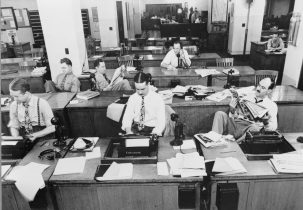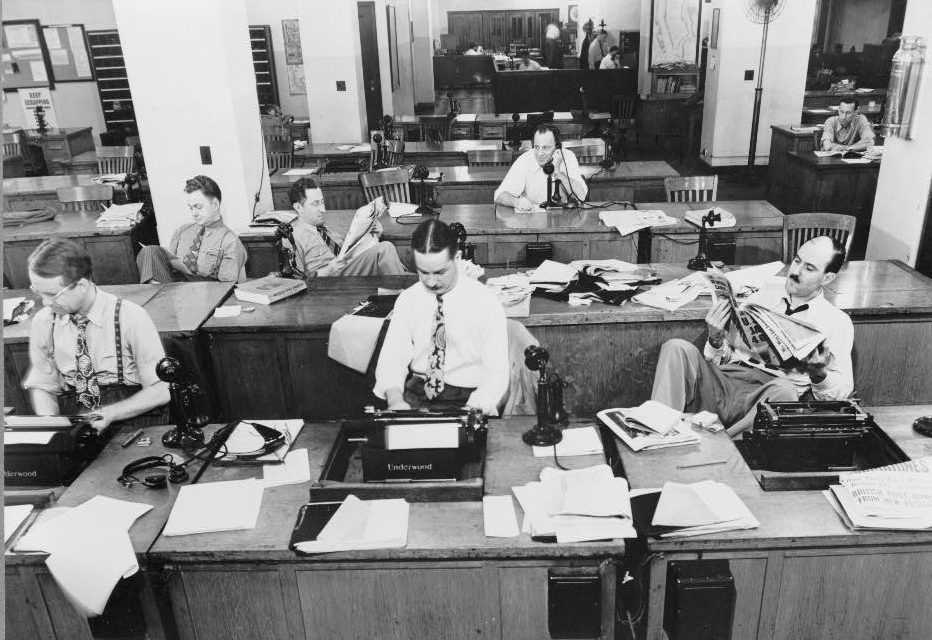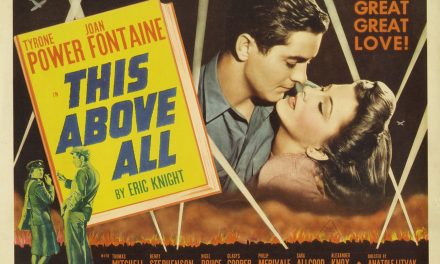The Axis Powers are infamous for using propaganda as a tool of war and imposing complete government control over the news media. The United States, by contrast, values press freedom, but it also recognizes the enormous power of information. It is engaging in a two-pronged effort to control the flow of news. On the one hand, the U.S. tries to help people in Axis-occupied nations access uncensored reports; on the other hand, it prevents its own citizens from reading about the latest developments on the battle front in American newspapers.
The press has been asked to obey stringent guidelines for publication. Often they cannot break news until the government announces it first, delaying information unnecessarily.
And news reports are not the only thing being censored. Letters, books and paper sent by telegram, cablegram or wireless message have now been restricted and require submission for approval before being shipped abroad.
U.S. Censorship Director Byron Price said that he would approve letters to individuals in foreign countries for shipment only if the communication “complies with all regulations issued by the Office of Censorship,” and “is not addressed or intended for, or to be delivered to, directly or indirectly, an enemy nation.”
In addition to the censorship of reporting and of letters, map makers, editors and manufacturers have been asked by the Office of Censorship to leave military depots, production plants and any military airfields constructed since Dec. 7, 1941, off new maps and charts.

Reporters and rewrite men in the newsroom of The New York Times, 1942. Photograph by Marjory Collins. From Library of Congress.
Censorship serves several purposes for the war effort. It is meant to prevent sensitive information being relayed to the enemy, and to keep up civilian morale by shielding the general public from bad news about the course of the war or the conduct of U.S. armed forces.
But Republican representative George H. Bender of Ohio claims that the current censorship procedures are unnecessarily confusing, despite Price’s best efforts.
“We must have censorship in wartime, but let that censorship be consistent. Let it be intelligent,” Bender said.
Price has told editors that they censorship guidelines are voluntary. However, Bender notes, the Espionage Act of 1917—and the threat that the government can ban any publication from the mail—blurs that distinction.
Among the publications that Price has praised for their voluntary undertaking of censorship during wartime are African-American newspapers such as the Pittsburgh Courier.
In a statement commemorating the fourth annual observance of National Negro Newspaper Week, Price declared, “Continued cooperation will make it possible for the American press to say at the end of the war that it has had a real share in achieving victory.”
The Office of Facts and Figures (OFF) is primarily responsible for distributing positive information about the war. Some American reporters have expressed concern that the current government restrictions placed on what can be published and what cannot put an overly optimistic spin on wartime reports. Faced with these complaints, the OFF has promised that wartime coverage will report both the good and the bad, stating that “the people of a democracy are entitled to know the facts.”
Delbert Clark, the manager of the Washington bureau of The New York Times for the last eight years, said that the press has more power over Washington, D.C., than they do over any other city in the world, but they fail to make use of it.
“The current crop of dictators must wonder why American presidents and Cabinet officers periodically subject themselves to questioning and heckling at the hands of newspaper reporters,” Clark said. “If they really understood the possibilities of the open press conference, and were clever enough to make use of it, they would know that it can be one of the most effective devices for controlling, coloring and suppressing the news.”
Clark said that reporters often practice a form of self-censorship by failing to ask proper follow-up questions and refusing to speculate on the issues. He added that many reporters are busy playing a “social game,” instead of “relying entirely upon their own merits to get ahead as newspaper men.” These factors compound the effects of the government’s official censorship policy.
Another problem with censorship, according to Rep. Paul Shafer (R-Mich.), is that semi-official publications for the Army and Navy often print what the newspapers have been forbidden from publishing.
“These Army and Navy publications and other magazines, including magazines containing articles written by the Secretary of the navy, Mr. Knox, revealing information of vital value to the enemy, can be found in stacks around those agencies which make a practice of collecting and selling old literature, and can be bought for a song,” Shafer said.
The formation of a trained board of news reporters and publicists to oversee all censorship and publication from an unbiased perspective has been proposed as a possible solution to the news-turned-propaganda issue.
Meanwhile in Nazi-occupied Poland, the press has been able to publish over 100 underground newspapers with the help of Allied nations such as Britain and Russia—despite efforts by the Germans to break the press and prevent publication.
It has been no easy task, as publication is punishable by death. But the Allies have been able to parachute in the needed supplies to keep the underground press up and running.
The United States now faces its own questions regarding censorship at home: How much information is too much to share with the home front? When is too soon?
Sources:
“100 Secret Newspapers Published in Poland with Allies’ Aid by Air.” The New York Times. March 11, 1942, pg. 1, 9.
“In the Nation: The Ever-Tightening Grip on Censorship.” The New York Times. March 13, 1942, pg. 18.
“Censorship Rules Clarified on Trade with Enemy Firms.” Wall Street Journal. March 19, 1942, pg. 6.
The Associated Press. “Article 2.” The Washington Post. March 25, 1942, pg. 3.
Kluchhohn, Frank L. “More War News is Promised.” The New York Times. March 22, 1942, pg. E5.
“Washington Correspondents.” The New York Times. April 5, 1942, pg. BR25.
“Map Makers Told to Omit Military Plants, Depots.” The New York Times. March 31, 1942, pg. 4.
The Chicago Sun. “U.S. Volume Aids Foe, Shafer Says.” The Washington Post. March 29, 1942, pg. 11.
“Censor Director Praises Race Press for War Aid.” The Pittsburgh Courier. March 14, 1942, pg. 14.





